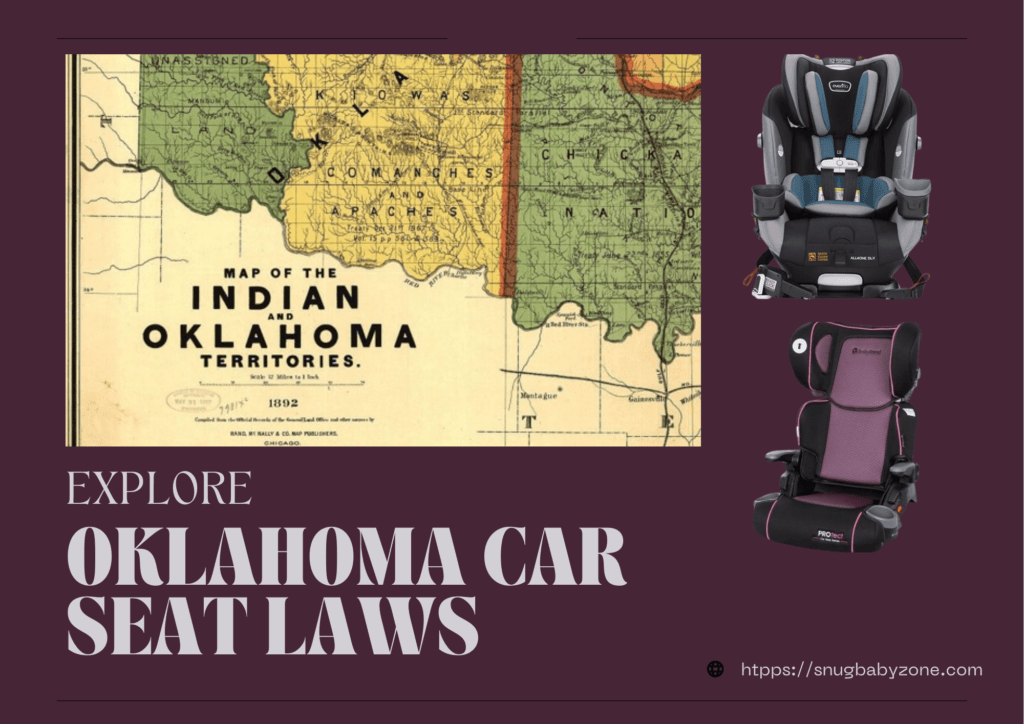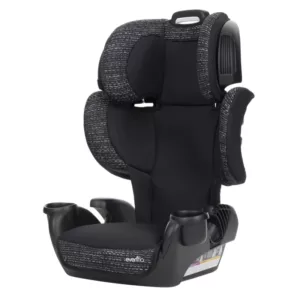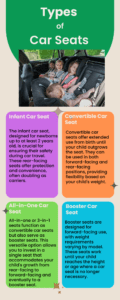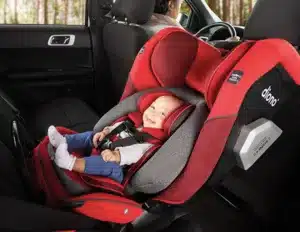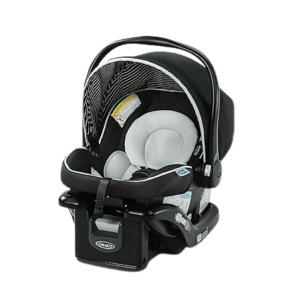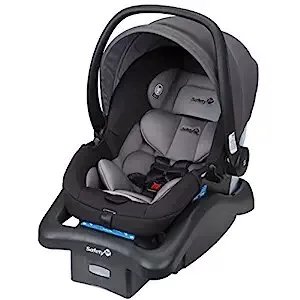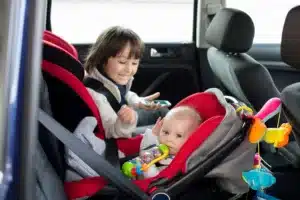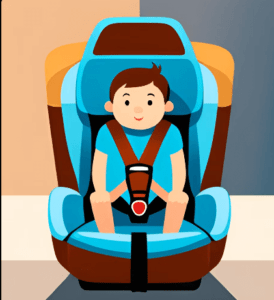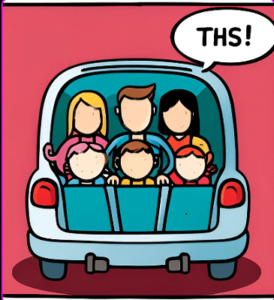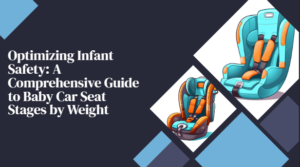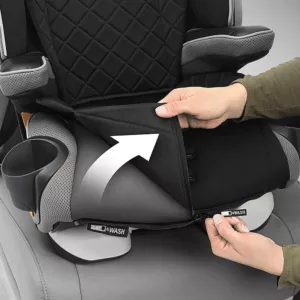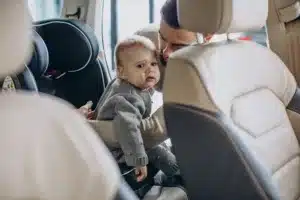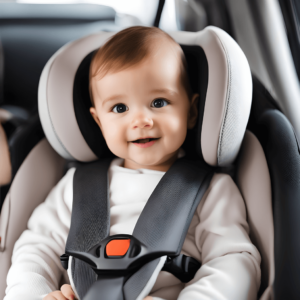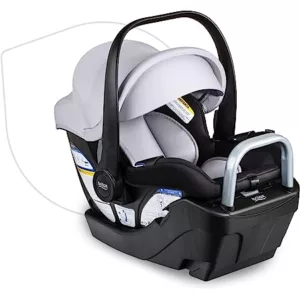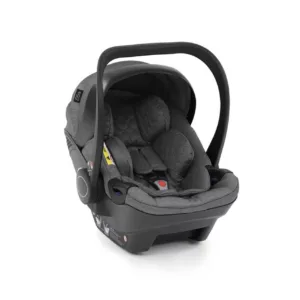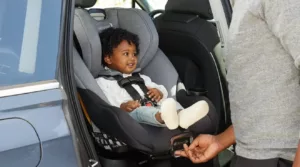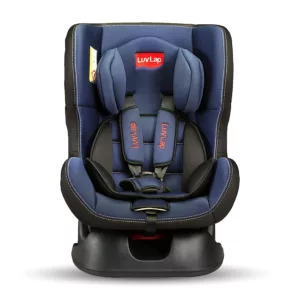In the journey of parenthood, ensuring the safety of our little passengers is paramount. Among the myriad concerns, one crucial aspect is adhering to car seat laws. In Oklahoma, as in many states across the U.S., regulations are in place to protect children during vehicle travel. Let’s delve into the specifics of Oklahoma car seat laws and understand the nuances to keep our precious cargo safe.
Thank you for reading this post, don't forget to subscribe!Info-Graphics – Oklahoma Car Seat Laws
Understanding Oklahoma Car Seat Laws
Oklahoma car seat laws mandate strict guidelines for the use of child restraint systems, commonly known as car seats, to safeguard children while travelling in vehicles. These laws aim to minimise the risk of injury or fatality in the event of a collision.
Table of Contents
Toggle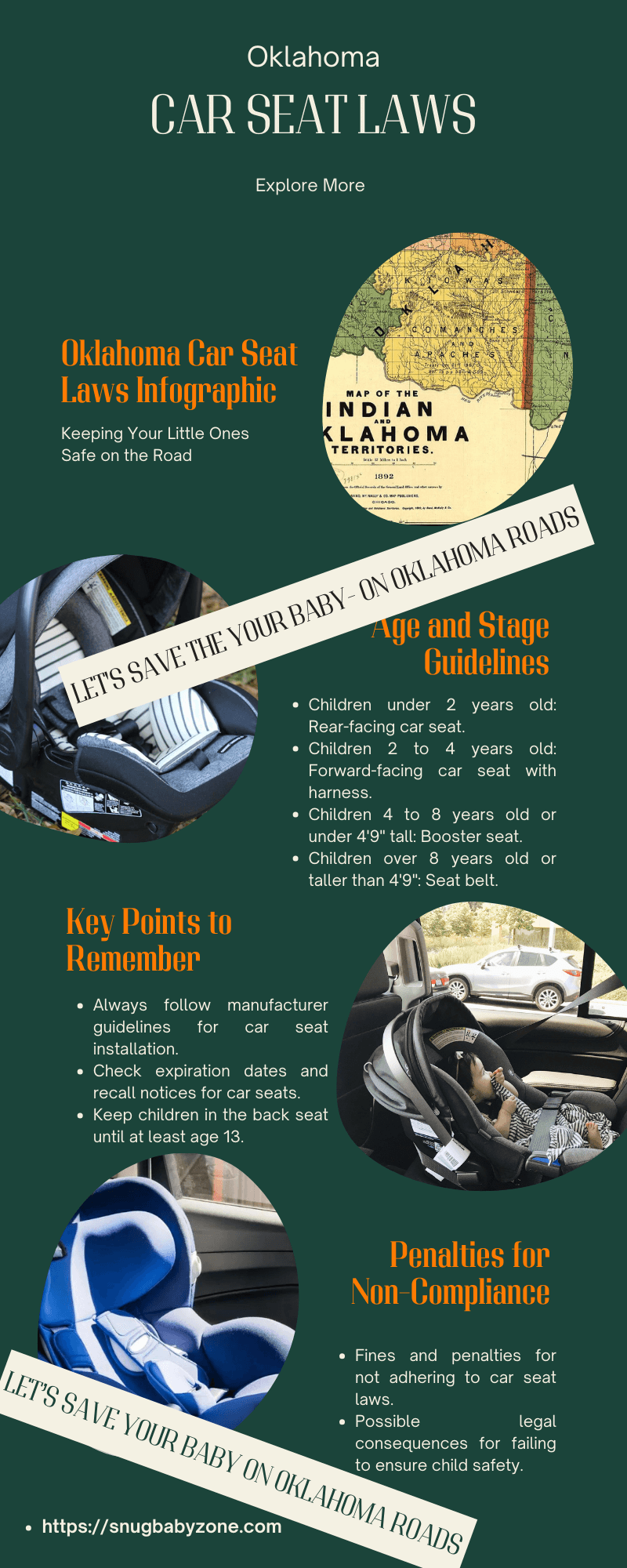
Compliance with Oklahoma Car Seat Safety Laws
As per Oklahoma’s car seat safety laws, children must be securely restrained in a suitable car seat or booster seat until they meet specific age, weight, or height requirements. Failure to adhere to these regulations may lead to fines and penalties for caregivers.
Key Provisions of Car Seat Laws Oklahoma
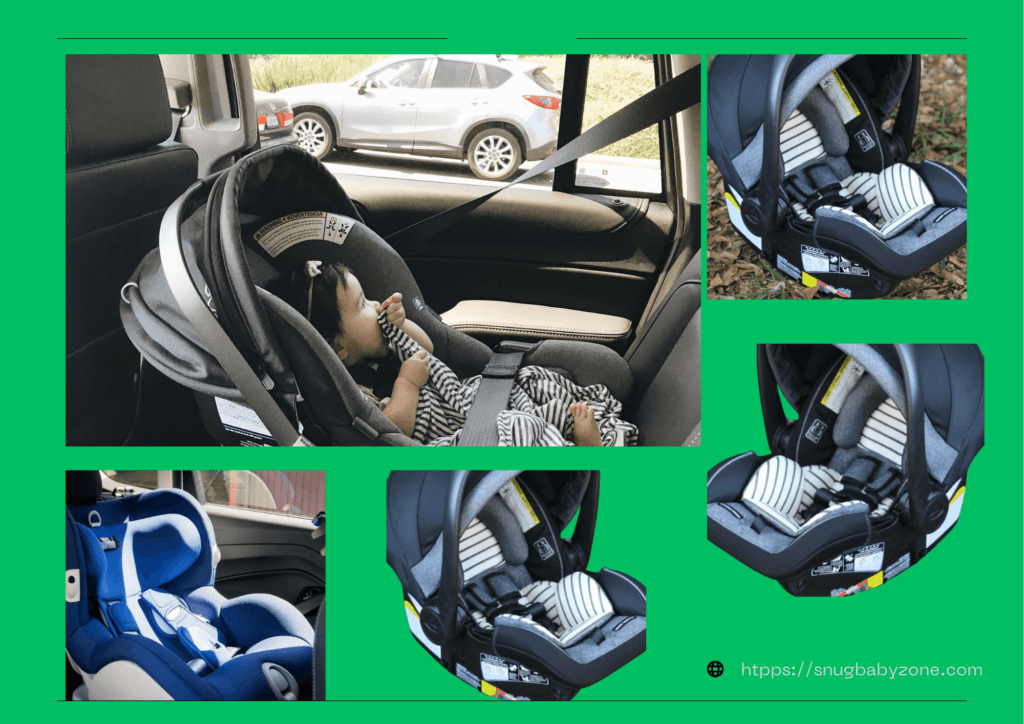
Age Restrictions:
Oklahoma car seat laws stipulate that children under the age of 2, or those who have not yet reached the age of 2, must be secured in a rear-facing car seat. This provision ensures optimal protection for infants and toddlers, as rear-facing seats distribute crash forces evenly across the child’s body, reducing the risk of head, neck, and spine injury.
Weight and Height Requirements:
After a child exceeds the rear-facing seat’s limits, they should switch to a forward-facing car seat fitted with a harness. Children under 4 must be securely fastened in a car seat with an internal harness.
Oklahoma law specifies weight and height limits for this transition, emphasising the importance of using appropriate restraint systems based on the child’s size and developmental stage.
Booster Seat Mandate:
Children who have outgrown their forward-facing car seat but are still too small to use a vehicle’s seat belt system effectively must utilise a booster seat. Children aged at least 4 years old but younger than eight must utilize a child passenger restraint system or booster seat, unless they surpass a height of 4’9 inches.
Booster seats elevate the child, enabling the seat belt to fit correctly across their chest and lap, reducing the risk of injury in a crash.
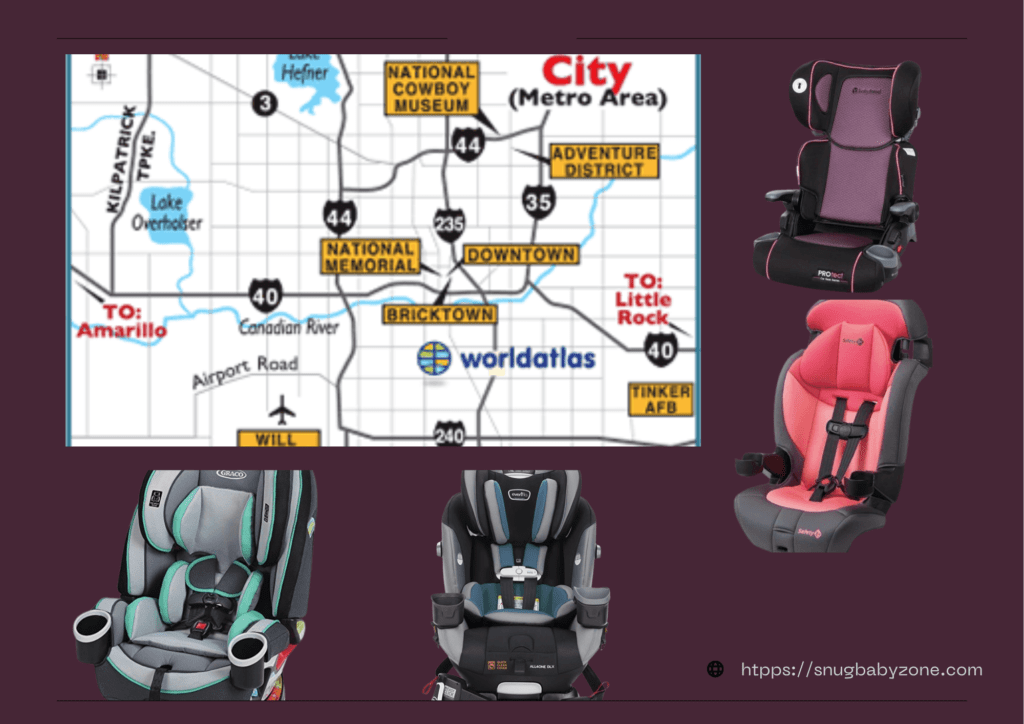
Seat Belt:
Children taller than 4’9″ or aged 8 and above should be restrained using a seat belt. It’s important to note that front seat airbags may pose a risk to small children. For optimal safety, children should ride in the vehicle’s back seat.
Importance of Adhering to Car Seat Law Oklahoma
Ensuring compliance with car seat law in Oklahoma is not merely a matter of legal obligation but, more importantly, a responsibility to safeguard the well-being of our children. Car accidents continue to be a primary cause of injury and mortality among young passengers, underscoring the critical role of proper car seat usage in mitigating risks on the road.
Educating Caregivers on Car Seat Safety
Effective implementation of car seat laws in Oklahoma necessitates comprehensive education and outreach efforts targeting caregivers, including parents, guardians, and childcare providers. Resources such as informational campaigns, safety workshops, and online tutorials can empower caregivers with the knowledge and skills needed to select, install, and use car seats correctly.
Final Verdict on Oklahoma State Law On Car Seats
In conclusion, ensuring the safety of our children on the road begins with understanding and adhering to Oklahoma car seat laws. By complying with these regulations and staying informed about age, weight, and height requirements, caregivers can provide optimal protection for their little ones.
Remember, the importance of proper car seat usage goes beyond legal obligations—it’s about safeguarding the well-being of our precious passengers. Through education and outreach efforts, we can empower caregivers to make informed choices and prioritise safety whenever they travel with children. Together, let’s snug our babies safely and make the roads safer for all.
Frequently Asked Questions About Oklahoma Car Seat Laws
What is the height and weight limit for a booster seat in Oklahoma?
- In Oklahoma, children who have outgrown their forward-facing car seat but are still too small to use a vehicle’s seat belt system effectively must utilise a booster seat. While specific height and weight limits may vary depending on the manufacturer’s guidelines for each booster seat model, a general rule is that children should continue to use a booster seat until they reach a height of 4’9″ or taller. This height ensures that the vehicle’s seat belt fits properly across the child’s chest and lap, providing optimal protection during a crash.
What are the car seat laws in Oklahoma in 2023?
- Car seat laws in Oklahoma typically remain consistent over the years, with occasional updates to enhance child safety. As of 2023, the regulations mandate that children must be properly secured in an appropriate car seat, booster seat, or restrained by a seat belt, depending on their age, weight, height, and developmental stage. These laws aim to minimise the risk of injury or fatality in the event of a collision, emphasising the importance of compliance for caregivers to avoid fines and penalties.
What is the legal age to ride in the front seat in Oklahoma?
- In Oklahoma, there is no specific legal age requirement to ride in the front seat of a vehicle. However, it is recommended that children under the age of 13 ride in the back seat whenever possible, as it is generally considered safer. This recommendation is based on research indicating that the rear seat offers more excellent protection in a crash, especially for young passengers who may be more vulnerable to injuries from airbags and other factors in the front seat.
Can you legally ride in the bed of a truck in Oklahoma?
- In Oklahoma, it is generally legal for individuals to ride in the bed of a truck, provided certain conditions are met. However, restrictions and safety regulations are in place to minimise risks and ensure the safety of passengers. For example, passengers under the age of 18 are required to be restrained by a safety belt or other approved restraint system while riding in the bed of a truck. Additionally, some municipalities may have ordinances regarding this practice, so it’s essential to check local regulations for specific guidelines.
Is it illegal to smoke in a car with a child in Oklahoma?
- As of my last update, no specific statewide laws in Oklahoma prohibit smoking in a car with a child present. However, there is growing awareness of the dangers of secondhand smoke exposure, especially for children, and many individuals choose to refrain from smoking in vehicles to protect passengers’ health. While it may not be illegal, smoking in a confined space such as a car can pose significant health risks to children, including respiratory issues and increased risk of developing chronic diseases.
Is a seat belt ticket a moving violation in Oklahoma?
- In Oklahoma, receiving a seat belt ticket is typically considered a moving violation. It means that it is an offence related to the operation or movement of a vehicle while in motion. Moving violations often result in fines, points on the driver’s record, and potentially higher insurance premiums. Therefore, drivers and passengers must always wear seat belts to comply with traffic laws and, more importantly, to ensure their safety and the safety of others on the road.
What is the legal age to smoke in Oklahoma?
- In Oklahoma, the legal age to purchase and possess tobacco products, including cigarettes, electronic cigarettes, and smokeless tobacco, is 21 years old. This age restriction is by federal law, which was enacted to help reduce tobacco use among young people and prevent access to tobacco products by minors. Individuals under the age of 21 are prohibited from purchasing or possessing tobacco products, and retailers are required to verify the age of customers before selling tobacco.
Related Resource:
